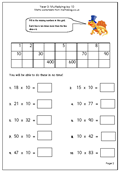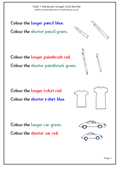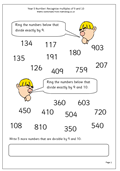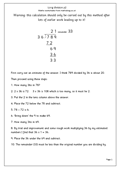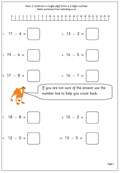 Once children are confident with subtracting single digits from single digits they can move on to subtracting from 2-digit numbers. This maths worksheet has a number line to help. Children can either start with the larger number and count back, or start with the smaller number and count on.
Once children are confident with subtracting single digits from single digits they can move on to subtracting from 2-digit numbers. This maths worksheet has a number line to help. Children can either start with the larger number and count back, or start with the smaller number and count on.
The next stage would be to start with the smaller number and know how many it takes to reach ten and then add on from there. E.g. 13 – 8. Start at 8 and know that add 2 will make ten. Continue from ten and add on the unit digit, in this case 3, to make 2 + 3 = 5. 13 – 8 = 5. A combination of knowing and counting on may well take place: many adults use this technique.

